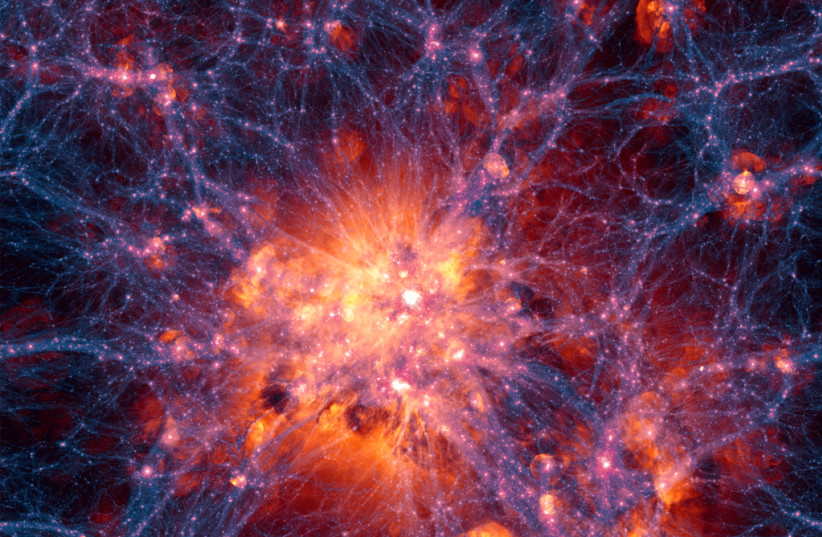Scientists have managed to look back in time farther than ever before, taking a look at galaxies as they were 12 billion years ago in their quest to study the mysterious nature of dark matter, as noted in a new academic study.
The findings of this study offer a glance at some of the fascinating facts that relate to the study of the earlier days of the universe.
The study was published in the peer-reviewed academic journal Physical Review Letters.
<br>Observing dark matter
Dark matter is an important building block of the universe, though it is one we don't know much about. Its existence alone has only been inferred due to its gravity.
Despite this, it is estimated that dark matter makes up 85% of the observable universe.

As the name implies, dark matter itself is invisible. It emits no light, and thus cannot be seen.
But there are some ways to know it is there, though this is a bit complicated.
To put it as simply as possible, consider two galaxies, one that you want to study and the other that's farther way but still emitting light. That light will pass through the galaxy you want to study. The dark matter in the galaxy you want to study will have its own distortion on space and time due to gravitational attraction - this isn't something specific to dark matter, and is in fact part of Albert Einstein's theory of general relativity.
When the light from the first galaxy passes through the distortion made by dark matter in the galaxy you want to study, the light will end up bending, essentially changing the shape of how the galaxy looks. It is through this that scientists are able to use the distorted galaxy like a lens, essentially measuring the amount of dark matter.
Sounds simple, right? But there's a problem.
Light is finite and it can be very hard to actually see galaxies far away. This also means that any distortion would be harder to see, too. You would need the light from many other galaxies behind it to properly visualize the distortion.
This is where scientists have been stuck for a long time, and the mysteries of dark matter from galaxies far away remained elusive.
Note that when describing galaxies far away, distance and time are linked. This is because light travels at a finite speed, so any light we receive on Earth would be much older and not instantaneous. We would be seeing light from hundreds if not thousands of millions of billions of years ago.
This is what is meant by looking back in time. In essence, the farther away we can look, the further back we're able to look.
But how can scientists overcome this challenge? How can we use the light of other galaxies to see distortions and measure dark matter when that isn't physically possible with our current capabilities?
Using the light of the Big Bang
Instead of using the light from other galaxies, they used the very light of creation: The microwaves released by the Big Bang at the dawn of the universe.
Using just visible light alone, the scientists were able to use the Subaru Hyper Suprime-Cam Survey (HSC) to identify around 1.5 million of these "lens" galaxies, whose light would have seen 12 billion years ago. To illustrate how old that is, the universe itself is estimated to be around 13.7 billion years old.
Next up, it was time to light them up. To do this, they used the European Space Agency (ESA) Planck satellite to measure the surrounding microwaves of the cosmic microwave background (CMB), all leftover radiation from the Big Bang.
With this, they were able to find the distortion and measure the amount of dark matter. Because of how old these galaxies are and how far back the scientists were able to go, it means that they were able to measure the dark matter of galaxies just 1.7 billion years after the birth of the universe. This would, in essence, be some of the earliest looks at dark matter in these early stages of the galaxy.
As explained by Israeli astrophysicist Neta Bahcall, a Princeton University professor who was one of the co-authors of the study: "This result gives a very consistent picture of galaxies and their evolution, as well as the dark matter in and around galaxies, and how this picture evolves with time."
